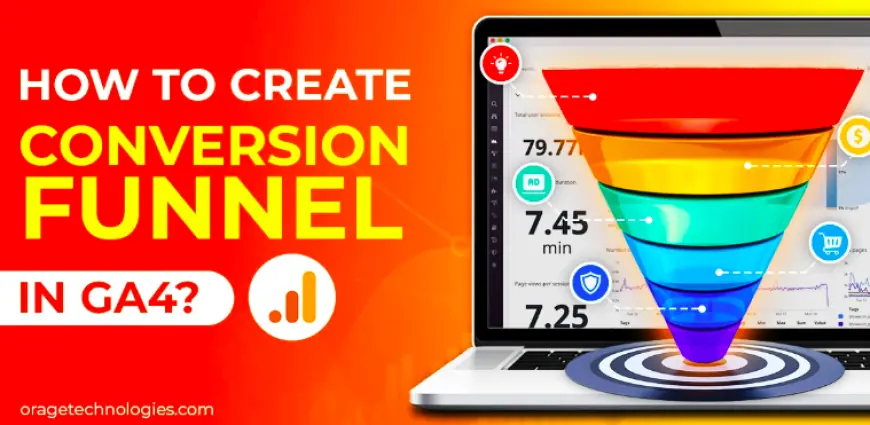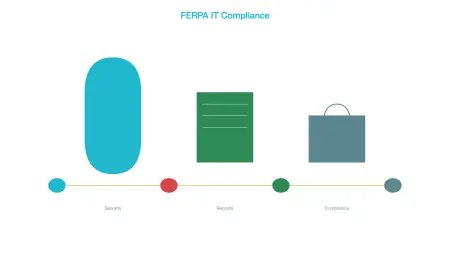How to Build a Conversion Funnel in GA4: A Comprehensive Guide
Learn how to craft a Conversion Funnel in GA4 with this step-by-step blueprint. Discover event setup, user journey analysis, and optimization strategies using Google Analytics 4’s Funnel Exploration tool. Perfect for marketers aiming to boost conversions!

Knowing how users navigate your website or application is a key factor in increasing conversion rates. The Conversion Funnel report in GA4 (Google Analytics 4) gives you a visual representation of the user journey leading to your goals, whether that be a purchase or submission of a form. With GA4's event-driven data model, you will have greater flexibility than you did in Universal Analytics. In this comprehensive guide, we will discuss the steps to create a Conversion Funnel in GA4, common questions about the report, and helpful tips to ensure your funnel is optimized for goal conversion. Let's get started!
What Is a Conversion Funnel in GA4?
So, what does a Conversion Funnel in GA4 do? It tracks the user journey by tracking the completion of specific actions or events (like page views, clicks, or purchases) to see how users complete your goals. The Funnel Exploration report in GA4 allows you to define your steps, visualize drop-off points, and analyze user behavior in detail. An example of an e-commerce funnel might be steps like "Product View," "Add to Cart," and "Purchase." By seeing where users drop off you can find opportunities for improvement and optimize conversion rates.
This feature is invaluable for any business looking to better understand user behavior and optimize their digital approach.
Why Invest Your Time in the Conversion Funnel in GA4?
Why is it worth investing time in the Conversion Funnel in GA4? It gives you valuable insight into how users interact with your website or app, as well as areas in which they drop off along the process. This enables you to eliminate friction points and improve user experience. Whereas Universal Analytics only allowed for basic goal completion Funnels, GA4’s funnels allow for immense customization - you can track any event, attach filters, and analyze any audience segment.
Additionally, GA4 has micro, i.e. clicking a button, and macro, i.e. bids a sale, conversions, so you have a complete view of your user's journey. These invaluable insights give you the power to improve marketing campaigns and drive ROI.
How Do You Create a Conversion Funnel in GA4?
Are you ready to create a Conversion Funnel in GA4 and successfully set up a custom funnel for your business? Here’s how to get started:
Log in to GA4: Log in to your Google Analytics 4 account on your device and select the property associated with your account.
Explore Section: On the left side of the menu, click “Explore” where you can locate the Exploration Reports.
Funnel Exploration: Select the Funnel Exploration template from the list of templates available in the section.
Set up the Steps in the Funnel: Under Tab Settings, click the pencil icon next to “steps.” Label each of the steps (e.g. Landing Page, add to cart, checkout) and set their event or page location as relevant. For instance, a “page_view” event for a URL or a custom event such as “purchase.”
Funnel Type: Select if you want an open or closed funnel. If you are creating an open funnel, it will count all users regardless of which step they enter at, and will count them as part of the funnel. If you create a closed funnel, the user must be counted starting at the first step of the funnel.
Add Filters (optional): Use filters to hone in on specific groups of users, like mobile users or users from a specific location.
Specify the date range: Indicate a date range - for example, the last 30 days - to analyze your data.
Save and analyze: Give your report a name (for example, "Sales Funnel") and hit "Save". The funnel will show a bar chart with the number of users progressing through the journey and where users drop-off.
Congratulations! You've now built a fully functioning Conversion Funnel in GA4 that is ready to provide you with actionable insights. Just ensure your events are accurately set up and you're on your way!
What Events Are Best for Your Conversion Funnel?
What should you track in your Conversion Funnel in GA4? That depends on your objectives.
If you have an e-commerce site and wanted to track critical events, you might consider these:
session_start - when a user session started
view_item - when a product page was viewed
add_to_cart - when an item was added to a cart
begin_checkout - when a user started the checkout process
purchase - when a transaction was completed
If you have a non-e-commerce site, you might be tracking events like "form submission", "signup", "video view", etc. To set these events up, navigate to the Events tab in the Admin section of GA4, create custom events, and mark events as Key Events that you want to track conversions for. When setting up events and funnel tracking in GA4, make sure to set up events correctly so that your funnel reflects realistic user behavior.
How Can You Optimize and Analyze Your Funnel?
Now that your Conversion Funnel is set up in GA4, how to make the best of it? Start with the Funnel Exploration report, and know where users move to, and where they drop off from. If 75% of users view a product, and only 25% of users add the product to the cart, there’s your red flag!
Optimizing your funnel could consist of the following:
Identify Bottlenecks: These may be the steps in the Funnel that have a higher drop off, for example; overly complex checkout.
Segment Users: Compare users to find out how segments such as “new vs returning” differ.
Researching user Path Exploration: This is more of a non-linear model, so understanding how users order items (this is just a single example), before they convert.
Testing Changes: A/B testing elements such as CTAs or page layouts to reduce the friction users experience in the funnel.
Review Trends: Using Trended Funnel, you can assess performance over time, and spot trends or patterns.
Routine analysis allows you to optimize the user journey and increase conversions.
What’s the Difference Between Open and Closed Funnels?
In GA4, what is the difference between open and closed funnels? A closed funnel only attributes users who follow the sequence of steps, in the exact steps from the first step. For example, a closed funnel will only count users that look at a product page and then add a product to the cart. An open funnel allows users to enter the funnel at any step, making it a more appropriate option for flexible journeys, such as blog-to-lead conversions.
Use a closed funnel for strict processes (like checkouts) and use an open funnel for broader insights. The great thing is that you can toggle between either funnel in the Funnel Exploration settings.
What are the Differences in GA4’s Funnel Exploration vs. Universal Analytics?
How does the Conversion Funnel differ in GA4 compared to Universal Analytics (UA)? Funnel reports in UA were limited to the goals or e-commerce funnel you set up, and could be very rigid. GA4’s Funnel Exploration allows you to:
Create funnels based on historical data.
Dynamically adjust steps.
Track any event instead of only page views.
Utilize closed funnels, open funnels.
Explore other advanced options like segmentation and path analysis.
UA was easier to set up for very basic tracking, but GA4's event-driven model will get you better insights, as long as you have everything set up right!
What challenges can you see when developing a conversion funnel in GA4?
When developing a conversion funnel in GA4, challenges are inevitable in the whole process of creating a funnel. Here are some of the challenges and fixes that commonly arise in learning how to set up a funnel.
1. Events Missing: If events are not configured, your funnel will not be able to track in line with what you intended. Fix: Configure custom events in GA4 or GTM.
2. Data Delays: GA4 data can take longer than 24 hours to process. Fix: Wait until your exploration funnels (and any other funnels you are developing) are older than 24 hours before interpreting their findings.
3. Multiple Journeys: A closed funnel will not allow you to track users who take an alternate path.
4.Fix: An open funnel will probably fit best if you want a flexible journey.
5.Data Limitations: You will have a user count and a funnel quiz; you will not have the other custom metric (s) you would use in your normal exploration report. Fix: Use segments for custom metrics.
You definitely want to test your events in Debug Mode within GA4 to make sure they are measuring what you expect before you build your funnel.
How To Leverage Advanced Features To Improve Your Funnel?
If you want to improve the metrics in your Conversion Funnel in GA4, try these advanced features:
Segmentation: You can compare up to four segments (e.g., mobile versus desktop users) in order to understand the difference in behavior.
Cohorts: You can analyze how a group of users behave over time.
Custom Dimensions: You can append information like product categories to provide more detail.
Integrations: Use CustomerLabs to automatically push audiences into GA4 in real-time for targeting.
These advanced features allows you to cater your tactic to specific audiences and optimize your funnel performance.
How Do You Ensure Data Accuracy in Your Funnel?
How can you ensure your Conversion Funnel in GA4 delivers reliable data? First, verify that all events are correctly implemented using Google Tag Manager or GA4’s event tracking. Next, use GA4’s Debug Mode to test events in real time. Additionally, audit your funnel steps regularly to ensure they align with your goals. Finally, apply filters to exclude irrelevant traffic, such as internal visits. Accurate data is the foundation of effective funnel analysis.
Final Thoughts
Creating a Conversion Funnel in GA4 transforms how you understand and optimize user journeys. By setting up custom events, analyzing drop-off points, and leveraging advanced features like segmentation and path exploration, you can turn data into actionable strategies. Whether you’re running an e-commerce store, a blog, or an app, GA4’s flexible funnel reports help you drive conversions and enhance user experience. Start building your funnel today and unlock the full potential of your analytics!
What's Your Reaction?
 Like
0
Like
0
 Dislike
0
Dislike
0
 Love
0
Love
0
 Funny
0
Funny
0
 Angry
0
Angry
0
 Sad
0
Sad
0
 Wow
0
Wow
0

















































